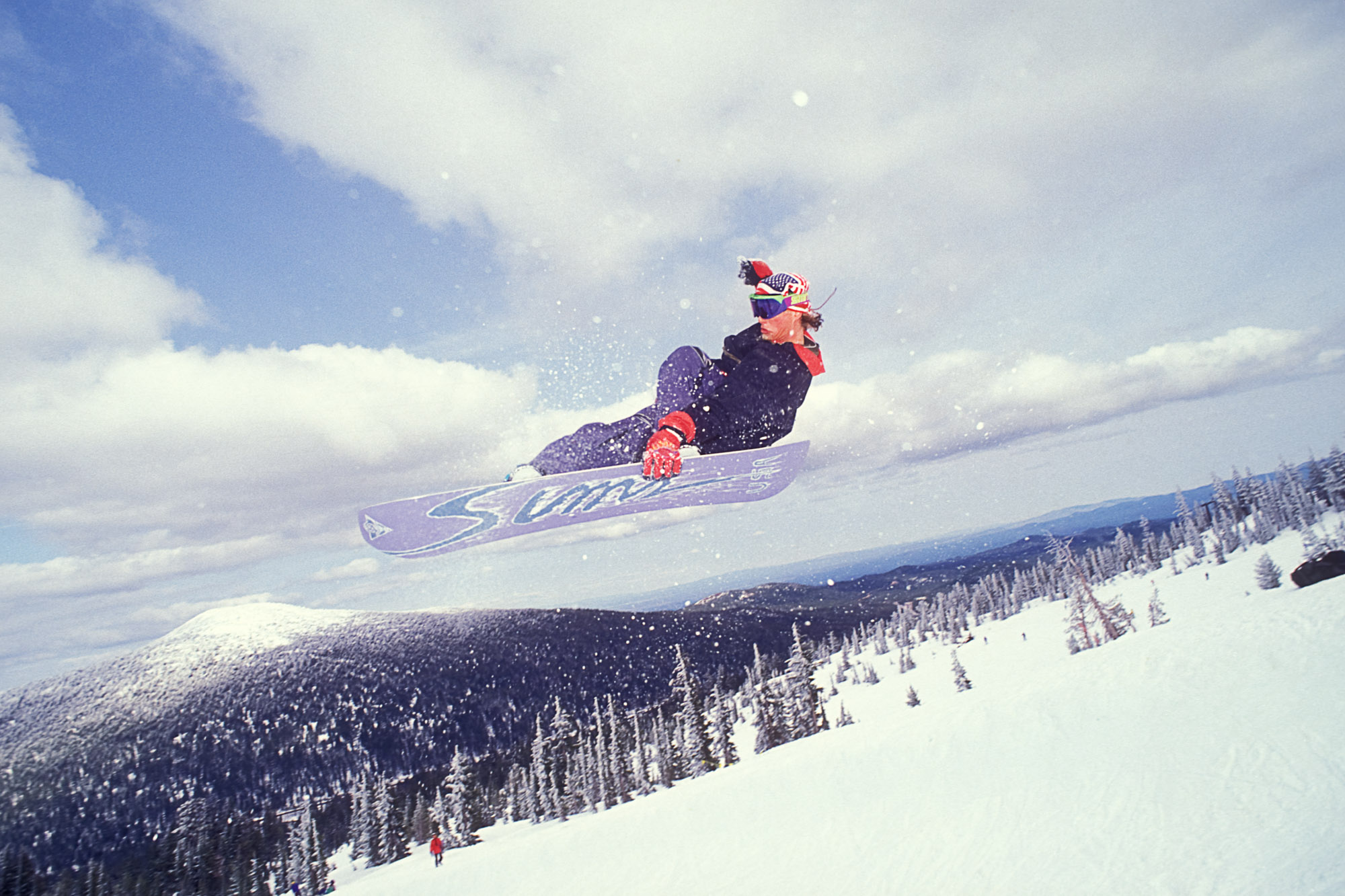

First published in Whitelines Magazine Issue 96, March 2011
Words: Matt Barr / Photos: Dano Pendygrasse
Judging by the coverage, you’d be forgiven for thinking that Shaun White was the first guy to rip as hard on a skateboard as he does on a snowboard. You’d be wrong. Back in the early days, everyone seemed to be at it. Steve Caballero was one of the first, and when he wasn’t redefining how to skate transitions, John Cardiel stole the show in Riders on the Storm. Hell, even Danny Way had a snowboarding shot in his Plan B Questionable video part.
Still, the original poster boy for the skate/snow crossover was always Noah Salasnek. Noah who? Allow JP Walker to explain:
“He was one of the first guys I was super hyped on. I remember his part in the film Critical Condition – I felt he was one of the guys that had a sick style. I was just stoked on his style. I totally tried to model myself after him for so long.”
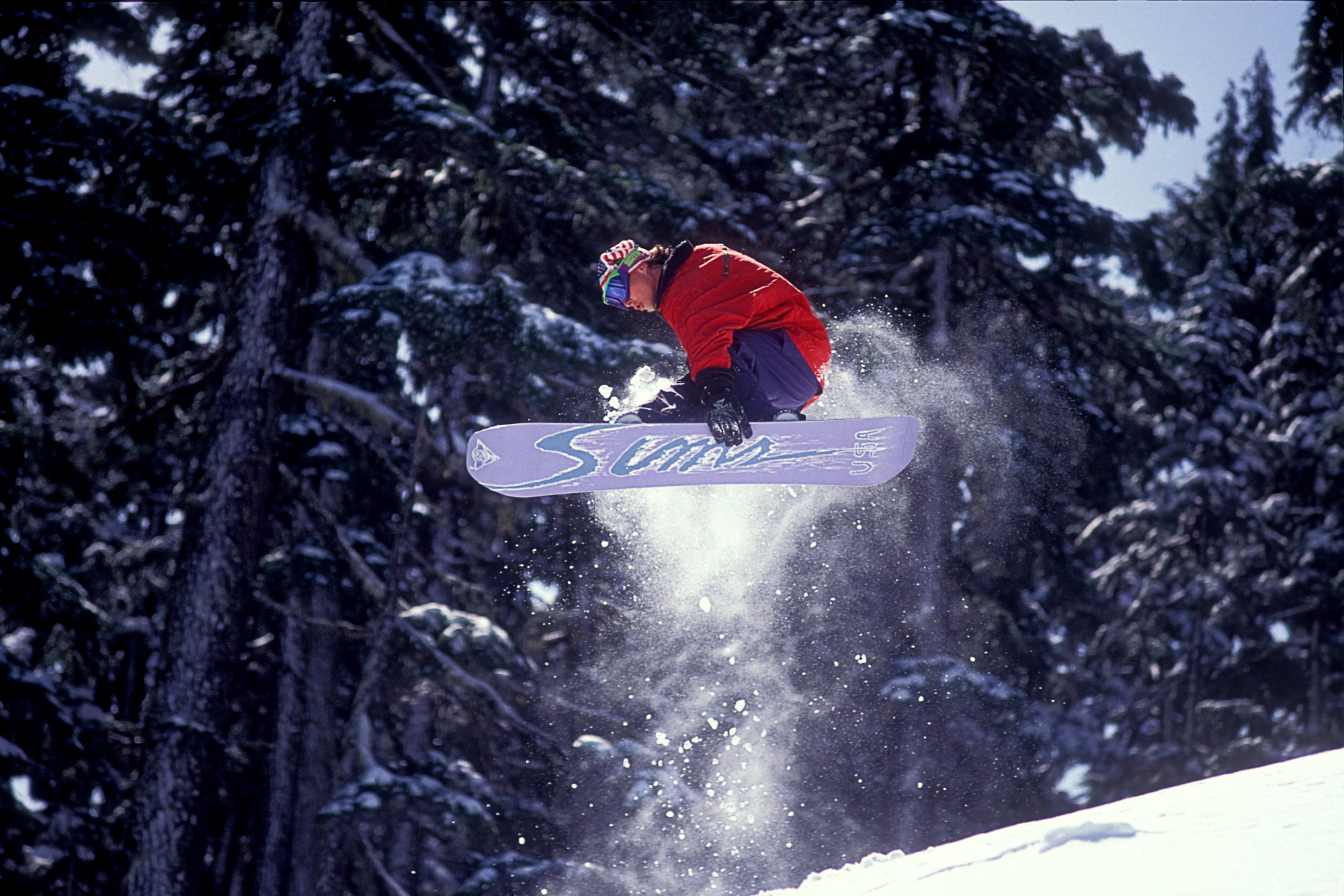
Any discussion about Noah Salasnek will inevitably involve that word: ‘style’. Despite his relatively low profile compared to some of the other legends we’ve featured in Roots, Salasnek’s importance to the history of snowboarding cannot be overstated. He came of age at a particularly crucial time during the sport’s development, when it was no foregone conclusion that the nascent sideways sport would follow the baggy-trousered lead of skateboarding rather than the tight-strided neon stylings of skiing (or even something really horrific, like windsurfing). This was an era when top freestyle pros wore hard boots, and the size of the average air tended to be measured in single figures. Compared to skateboarding and surfing, snowboarding didn’t really look great.
“People say that you’re either born with style or you’re not, but I don’t believe that. I had to work at mine”
But with his distinctively knock-kneed stance – straight off the vert ramp – Noah Salasnek successfully formed a bridge between skateboarding and snowboarding, and his own personal choices would eventually help to map out the direction of the sport, showing the way by his deeds and, above all, that loose, inimitable style.
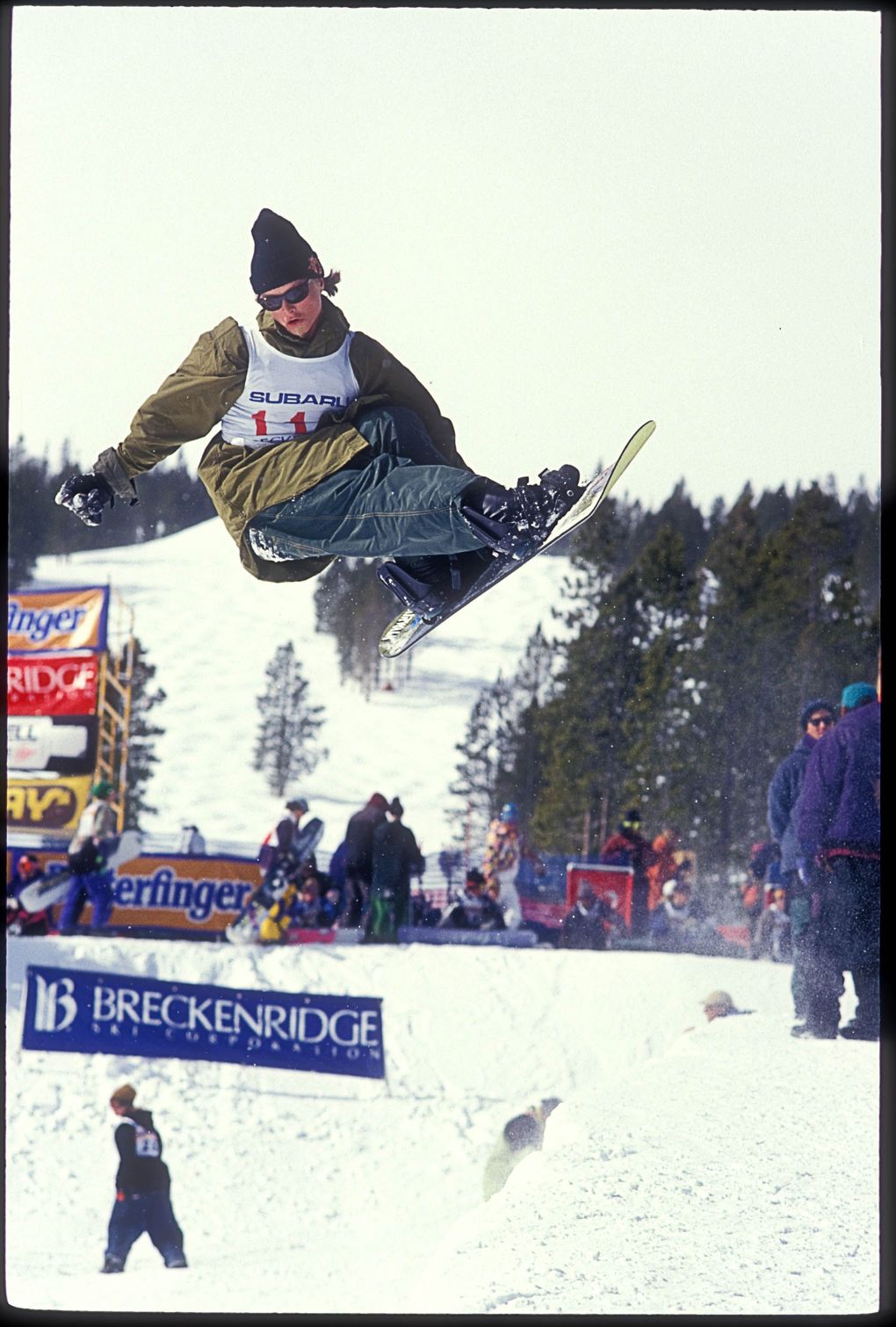
Nor-Cal local Salasnek first came to prominence during the mid-to-late 80s. A skater since he was 6-years-old, by the time he was in his teens he’d been picked up by local shop sponsors and, later, legendary skate company H-Street. An eight-year long vert career followed, with pro models on both H-Street and Life Skateboards.
Noah might have remained a pro skater, but the lure of snowboarding soon took over. Living as he did in Tahoe, here was the perfect fusion between skiing and skateboarding, and with his existing skills it came pretty easily. Early on, he hooked up with the equally influential Chris Roach to form a partnership that was about to drag snowboarding kicking and screaming into the future.
“In my opinion, Chris Roach has probably the coolest style ever and Noah Salasnek is the best all around rider ever,” explains Trevor Cushing, director of the essential VBS ‘Powder and Rails’ series of historical snowboarding documentaries. “I’m sure it’s probably possible to tie those two into every progressive thing that’s ever been done in snowboarding. Chris cared so much about style, and that directly influenced Noah.”


Noah’s increased profile led to him signing a lucrative deal with Sims Snowboards, the sponsor he would stay with for the rest of his pro career – and the company that would issue the legendary Salasnek pro model with skate truck graphics on the base. It was an iconic move, making explicit the link between the two sideways movements. But an arguably more significant development was taking place behind the scenes, catalysed by Noah’s friendship with Mike ‘Mack Dawg’ McEntire.
Mack Dawg had cut his teeth filming on H-Street projects, and as such cast an extremely critical eye over the state of freestyle snowboarding at this time. “During snowboarding’s early years, guys didn’t understand anything about style,” he recalls. “There were a few people that did, like Terry Kidwell and Craig Kelly, but for the most part the average person you’d see would just suck. And I was filming skating with people like Matt Hensley and Noah, so in contrast, snowboarding just looked stupid.”
“Noah’s focus on tricks and filming flagged up the direction almost every subsequent pro would take”
Things began to change when Salasnek asked McEntire to shoot a snowboarding clip for his Hokus Pokus section. “I began snowboarding with Noah, and I enjoyed it. He and Roach went off and were doing stuff, and they made snowboarding look good, so that’s why I started shooting it.” In other words, without Noah we might never have seen a Mack Dawg snowboard film.
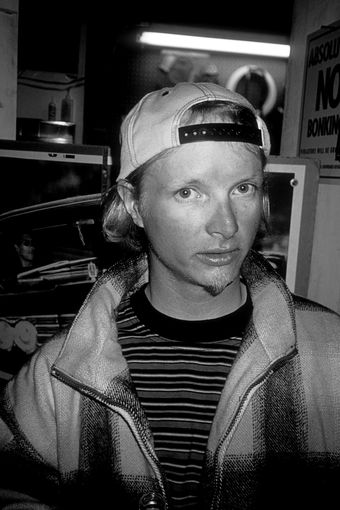
Early video appearances in MDP movies such as New Kids on the Twock and Pocahontas make the point eloquently, with the blonde-haired, goateed Salasnek “bonking everything in sight and buttering like a freak,” as JP Walker put it. Noah soon added the fabled late spin to his repertoire, managing to make the potentially ugly development elegant and smooth. Always, the attempt to make things look stylish was conscious, with Noah and Roach pushing each other forwards: “People say that you’re either born with style or you’re not,” says Noah now, “but I don’t believe that. You can work at it a little bit. I had to work at mine.”
In effect, Noah’s increased focus on tricks and filming flagged up the direction almost every subsequent pro would take. Contests would have their place, but as in skateboarding, film parts would be the true representation of a rider’s worth. When Mike Hatchet and his brother Dave formed Standard Films and began work on 1992’s TB2: A New Way of Thinking, their goal was nothing less than to make “the best snowboarding movie that had ever been made.” To that end, they picked the guys “who we thought were the top ten or twenty riders in the world.” Noah Salasnek was among them.
It was the beginning of a fruitful partnership that would see some of the all-time classic video sections committed to celluloid, and Noah’s own riding develop significantly. The key moment came when the Hatchett brothers took him to Alaska, forcing Salasnek to confront the challenge that still preoccupies every progressive freestyle pro from Nicolas Müller to Travis Rice: how to transfer those in-resort freestyle skills to the infinitely larger canvas of the Great White North.
Filmer Brad Kremer witnessed the transformation first hand.“It was really good to see that transition from full freestyle guy to big mountain guy. And he did it so well. He was one of the first to do that.” Mike Hatchett agrees. “He was a total natural talent. When we took him to AK, that’s when he started seeing the possibilities of riding up there. That unlocked the door for him. For me, his ability is top ten, for sure.”
The pinnacle came during the filming of TB5, with the first descent of an impossibly steep and fluted face called Super Spines. Even today, it is one of the most influential lines in snowboarding, probably Noah’s lasting bequest to the sport. No less a freeriding luminary than Jeremy Jones says that the moment he saw this section was the moment “my view of the ideal snowboard run changed forever.”
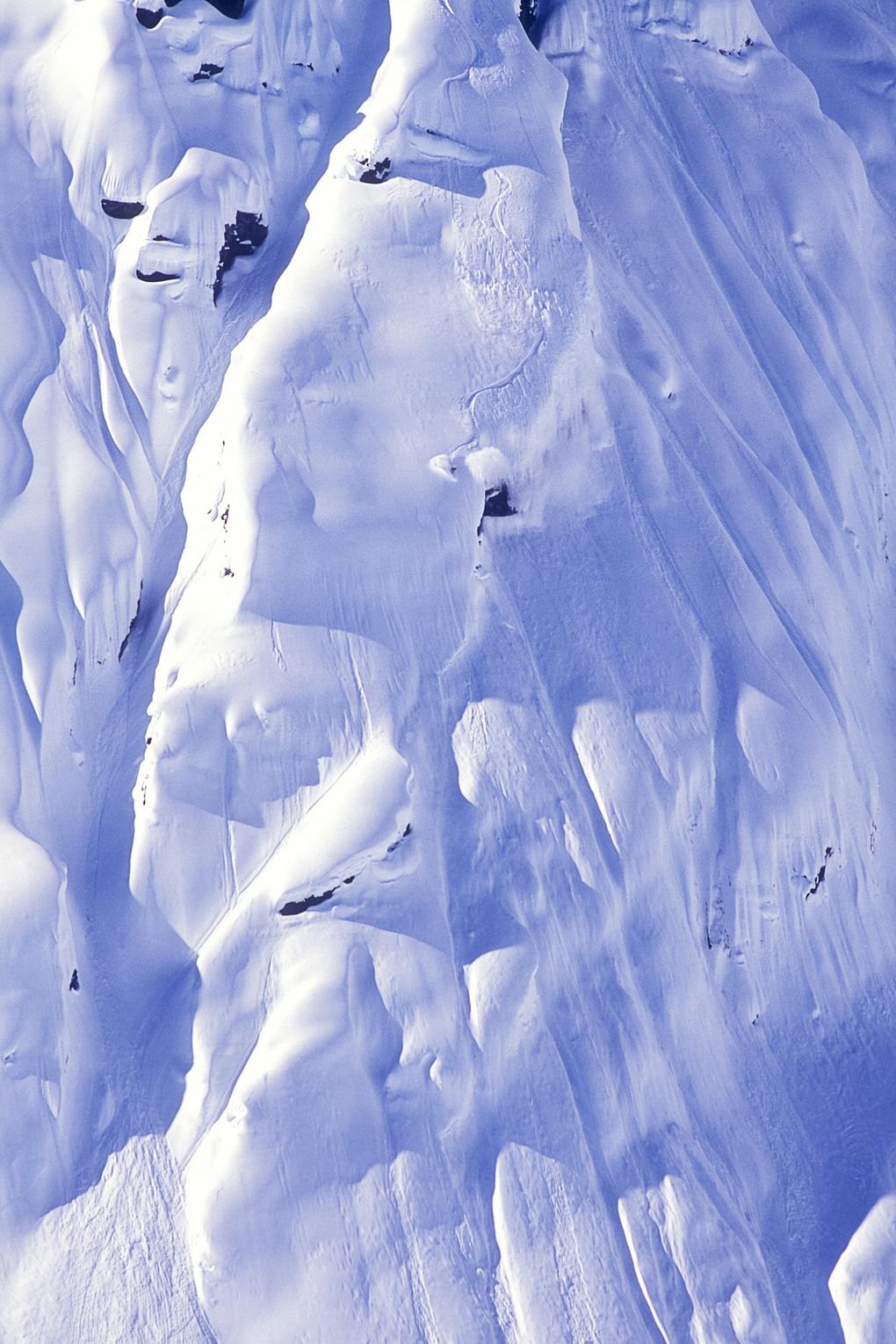
As with so many episodes in history, the tail end of Noah’s career is one of the great ‘what-if?’ moments. By the mid 90s, Noah had been on Sims for much of his career, but opportunity came knocking when Peter Line asked him to help set up a new company: Forum Snowboards. Excited by the opportunity, and sensing that his career might be about to wind down, Noah decided to jump ship, but was stymied by Sims who pointed out that he still had two years left on his contract. Forced to stay, Noah watched Forum become the biggest brand in snowboarding before being ignominiously dropped when his contract did come to an end. By then, the opportunity to join the revolution had passed.
”Without Noah we might never have seen a Mack Dawg snowboard film”
It’s a tantalising thought. If Sims had let Noah leave earlier, Forum Snowboards might have turned out very different. As JP Walker pointed out recently, “back when it started, there wasn’t that many people involved. Him and Peter could have easily spearheaded that whole thing together, and who knows what direction it would have gone?”
We’ll never know. But what is certain is that Noah’s influence on snowboarding remains to this day, from freestylers Shaun White (who Noah describes as a “new school me”) to freeriders such as Jeremy Jones. As Trevor Cushing puts it, “he influenced so many people. The list is endless, and somebody could make different connections all day.”